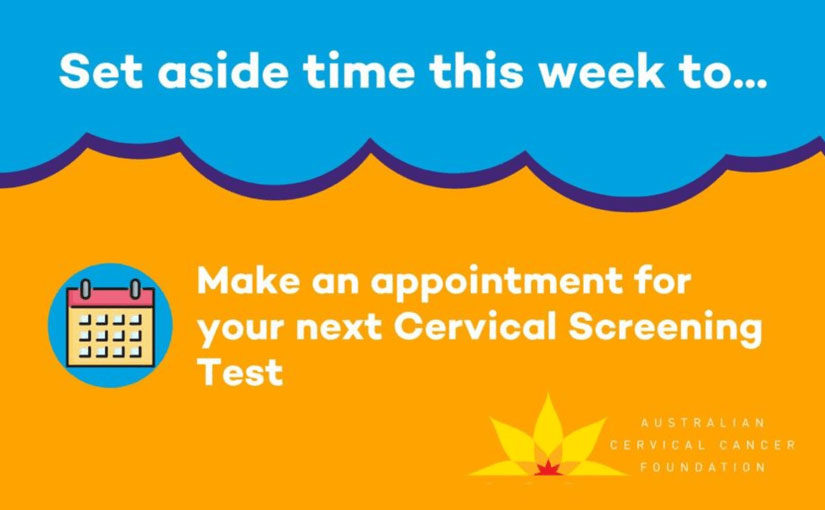According to a 2019 study, Australia was expected to be the first country in the world to eliminate cervical cancer by the year 20281, and the National Cervical Screening Program (NCSP) is a significant part of achieving this goal.
However, the latest Medicare Benefits Schedule (MBS) data for the Cervical Screening Test (CST) reveal that screening rates are decreasing2 and many people may be delaying tests due to lockdowns.
In March 2020 cervical screening rates were low, with just over 69,527 tests being performed during that month compared to 136,692 in March 2019.
A drop in CST numbers was expected in 2020 due to the program changing from the traditional ‘pap smear’ test to the Human Papillomavirus (HPV) test, which was brought in at the end of 2017 and is only needed every 5 years. However, the numbers seen in the latest Medicare data are significantly lower than expected. This raises concerns that cervical cancers could have been prevented, will now be missed or will be diagnosed at a much later stage.
Although numbers improved in the later part of 2020 during low case numbers and eased restrictions around the country, the latest outbreaks and resulting lockdowns have seen the number of people presenting for cervical screening beginning to drop-off once again.
According to the latest MBS data, between April and June of this year a total of just 99,182 cervical screening tests were performed across the country. This is compared to the 105,404 that were performed between April and June in 2020. Both figures are dwarfed by the 332,506 that were performed during the same time period in 2019.
The Cervical Screening Test (CST) detects HPV, which causes the majority of cervical cancers. The test is offered to anyone who is sexually active and has a cervix, every 5 years from the age of 25. Early detection of HPV can help prevent cervical cancer.
In 2020, an estimated 933 new cases of cervical cancer were diagnosed in women in Australia, and an estimated 238 women died from the disease.3 According to the Australian Institute of Health and Welfare over 70% of cervical cancers occur in women who have never been screened or who are lapsed screeners. 4
Australian women who are over the age of 30, have never screened or have delayed screening, are now eligible to request a self-collection test from their healthcare provider. The new self-collect CST was introduced to the screening program in 2019. Self-collection has become a more viable option for women who are uncomfortable with having the sample collected from their cervix by a health professional. This could be for multiple reasons including cultural beliefs, past experiences of trauma, or for other personal reasons.
Instead of a health professional taking the sample, eligible women are shown to a private area within the medical practice. There, they can take the sample themselves via the vagina using a specially-designed swab. The swab is then sent to a pathology laboratory to be tested for any of the 14 types of human papillomavirus (HPV), known to cause 99% of all cervical cancer cases.
Cytopathology expert Professor Annabelle Farnsworth said, ‘‘We have received hundreds of self-collected samples. This method is just as effective as a health professional taking it. The self-collected swabs are tested in the exact same way at the laboratory. It is a fantastic option for eligible women who are uncomfortable with the usual method of cervical screening. I would recommend to those who are eligible for the self-collect option that they do so under the supervision of their healthcare provider. Having a healthcare professional close-by ensures the test is performed correctly and provides support to the patient if they have any questions. The healthcare setting also ensures that the sample is handled correctly after collection and can reach the laboratory safely and in good time.”
Spokesperson from the Australian Cervical Cancer Foundation (ACCF), National Health Promotion Manager, Elizabeth Ham said, “In order to meet the elimination goal, it is important for women and all Australians with a cervix, who are 25 years and older, to attend regular Cervical Screening Tests. Cervical cancer is a largely preventable disease when the correct measures are taken. Now that self-collect is an option, hopefully it will encourage those most at risk to engage with their healthcare provider about cervical screening.”
RACGP representative Dr Lara Roeske is a General Practitioner who has witnessed firsthand the benefits of offering at-risk women the self-collect option for the Cervical Screening Test. Dr Roeske said:
“People who have been vaccinated against HPV still need to continue with Cervical Screening Tests. Women who may never have considered getting a cervical screening test now have the option to discuss collecting their own sample with their GP. It is worrying to see screening rates are low across Australia and offering a self-collect option could help change this. For some women who have experienced trauma, the thought of a cervical screening can be confronting, and they may feel more comfortable collecting their own sample. Self-collection is just as accurate as a test done by your GP, and your GP will support you, so you know how to go about it. It will help ensure more women are screened for cervical cancer, preventing devastating diagnoses and saving lives.”
Women’s Health Week is coming up on 6th-10th September and Pathology Awareness Australia, the ACCF and the RACGP are encouraging women and all Australians with a cervix to check-in with each other and ensure you are up to date with screenings.
Image credit: Australia Cervical Cancer Foundation
References
- https://www.thelancet.com/journals/lanpub/article/PIIS2468-2667(18)30183-X/fulltext
- MBS data accessed August 2021
- https://www.canceraustralia.gov.au/cancer-types/cervical-cancer/statistics
- AIHW 2019. Analysis of cervical cancer and abnormality outcomes in an era of cervical screening and HPV vaccination in Australia. Cancer series no. 126. Cat. no. CAN 129.

